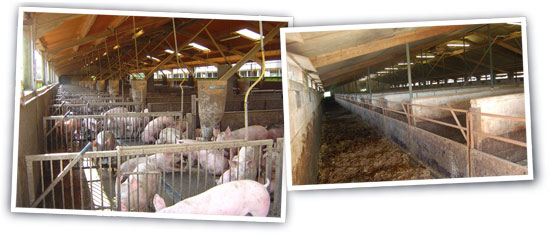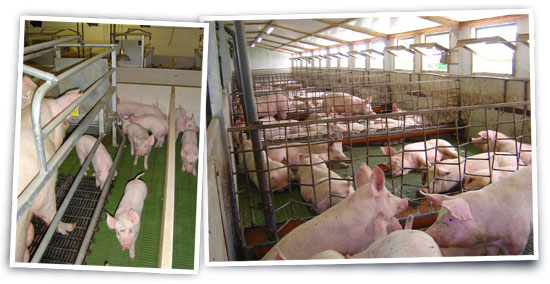1. It will help control disease:
Disease is frequently the largest cost burden in pig production, causing major losses and inefficiencies. Modern pig production, with All-in, All-out by room building or preferably site, has been developed to reduce the pathogen challenge to pigs from other pigs. It depends on good C& D between each batch to prevent carry over in the buildings, and if this is not achieved disease will increase.
Even in more continuous production systems with larger and more endemic disease problems, reducing the challenge to pigs from the buildings by good C&D will have a huge impact on disease levels. In acute disease outbreaks (e.g. of F18 E.coli or Swine Dysentery) C&D reducing challenge is an integral part of control. While in chronic Ileitis problems improved C&D leads to better growth and lower medication requirements due to lower disease.

Disease eradications depend on the C&D protocols to help eliminate the target pathogens. This applies equally to total depopulation-repopulation techniques and to medicated partial depopulations.
2. It will reduce antibiotic usage:
As good C&D helps reduce the challenge to pigs and resultant disease, so it will reduce the need for therapeutic and prophylactic antibiotic usage. This reduced usage will save on the cost of antibiotics, will help with food assurance and satisfy legislature.
3. It will reduce the risk of Zoonoses:
Zoonoses are infections passing from animals to man, often via meat. The best known of these is Salmonella. Extensive work throughout the world has shown that good hygiene coupled with C&D of pig accommodation, pig transport and slaughterhouse lairages is an integral part of reducing Salmonella in pig meat.

4. It will improve Quality Assurance:
C&D is a vital part of enhancing the quality assurance of the final pig meat product. This is vital for maximising sales and sales revenue
a. As explained above it will reduce potential Zoonoses such as Salmonella.
b. By reducing antibiotic usage it will reduce the chance of antibiotic residues in pigmeat.
c. By reducing antibiotic usage it reduces the potential for pig meat to be accused of being involved in the transfer of antimicrobial resistance to bacteria affecting humans.
d. Pig welfare is an ever increasing part of assurance. By reducing disease C&D will reduce one of the big challenges to welfare.
e. A well cleaned and disinfected pig house is much more acceptable to a quality assurance inspector.
5.Pigs will grow better:
Here the benefit comes in two parts. Firstly a simple reduction in disease, whether acute or chronic, will allow pigs to grow faster and more efficiently. However, there is more to it than that. In experiments with high health pigs Stahly et al showed that high levels of challenge with non-disease causing antigens (e.g. dust and faeces from a poorly cleaned house) led to pigs mounting an increased immune response, which used energy and hence reduced growth rates. This is shown below;
| Low Challenge Pigs | High Challenge Pigs | |
| Weight in (kgs) | 6,4 | 5,9 |
| Weight out (kgs) | 27,2 | 25,9 |
| Daily Gain (g) | 677 | 477 |
| Feed/Gain | 1,44 | 1,81 |
This doesn’t just have to be in high health pigs. Australian researchers showed that All-in All-out batches of conventional health pigs grew 6.3% faster from wean to sale in farms where good C&D occurred between batches.
6.The quality of pigs produced will be better:
This is helped by good C&D in several ways;
a. The reduction of disease will lead to more even size of pigs at sale enhancing marketing and processing.
b. Reduced disease will reduce potential carcase down grading.
c. The work that Stahly et al carried out also showed that the pigs with lower challenge deposited more lean meat and less fat leading to better carcases.
7...... and so it will reduce the costs of production;
Good C&D costs money but from the above it is easy to see it has many benefits which will reduce the cost of production. These include less disease, less antibiotic costs, better growth and better carcases. These benefits easily outweigh the costs of C&D. Later in this series of articles I will describe one farm where cost:benefit ratios of better that 1:7 were achieved.
So the need for good cleaning and disinfection has been shown. The following articles will cover how to clean and disinfect properly and complete something that the modern pig farmer cannot afford to do badly.




